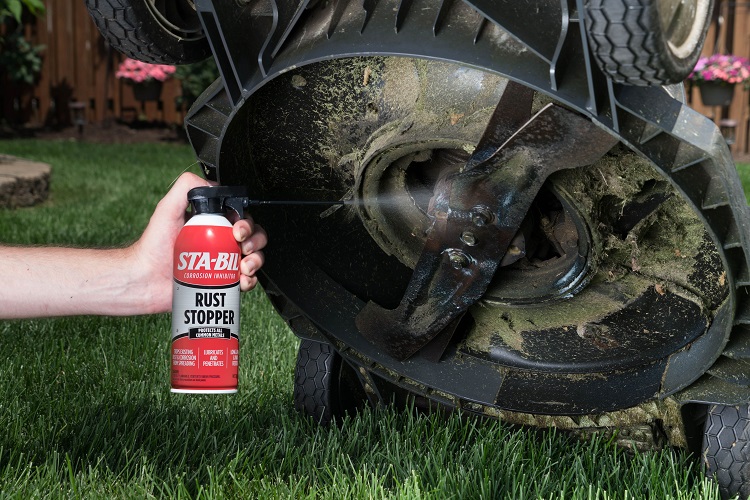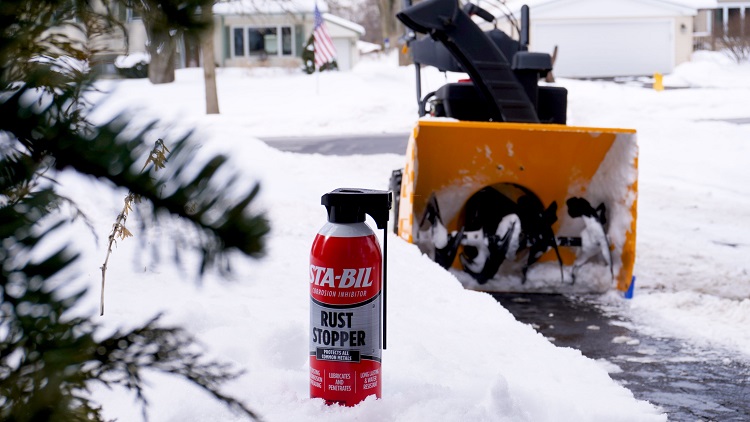STA-BIL Rust Stopper: What You Need to Know
Some of your most prized possessions are made up of metal. Your lawnmower, leaf blower, snowblower, or tractor wouldn’t be of much use if they were constructed from a weaker material. However, even though metal is tough enough to tackle demanding jobs, it’s not indestructible. Moisture that lingers on metal surfaces can lead to a little thing called corrosion, aka metal’s kryptonite. Once rust starts, it can quickly spread across the surface unless you use a product like STA-BIL Rust StopperOpens a new window. In this straightforward blog post, we will uncover the most important things you should know about the aerosol spray so you can put it to good use in your daily life.
STA-BIL Rust Stopper Explained
In case the name doesn’t give it away, the aerosol spray stops rust in its tracks. The intelligent formula fights existing signs of corrosion while leaving a durable protective layer over the treated area. Once applied, a strong film coating adheres to the metal’s surface to keep moisture out and preserve its integrity. While other similar products might produce runoff after application, STA-BIL Rust Stopper clings to the surface like a clear plastic food wrap provides a vacuum-like seal for your sandwich until you’re ready to take it out at lunchtime.
The spray also works great to protect your vehicle’s undercarriage during the winter months of the year. While driving over snowy roads, moisture can quickly collect on the metal surfaces underneath your vehicle. STA-BIL Rust Stopper provides an effective undercoating that penetrates into the metal, preventing moisture and oxygen from forming in the areas you rarely ever look at. For the same reasons, it also works well to prevent rust on snowblowers and snowplows.
Additionally, the aerosol also keeps farm equipment properly lubricated. For example, the metal components in tractors and harvesters need to remain smooth in order to function properly. Applying STA-BIL Rust Stopper ensures that every component works harmoniously together while protecting it in the process.
In short, you can say this product has several practical applications to prevent rust wherever it may be found. You just need to know how to use it.

How to Use STA-BIL Rust Stopper
Before using the product, give the can a firm shaking to mix up the formula inside. Ideally, you should hold the can two to three inches away from the area you plan to treat. Press down on the top of the can to release the product and move your hand in a sweeping motion to cover the entire area. The formula is thick, so a little goes a long way. Make sure that you apply an even coat to keep the metal surface as smooth as possible.
STA-BIL Rust Stopper Can Be Used All Year Long
Corrosion doesn’t take a holiday, so keeping a can of STA-BIL Rust Stopper is handy no matter what type of weather comes your way. Apply the spray to protect the blade in your lawnmower over the summer months. Alternatively, use the same can on your snowblower to prevent the body from rusting when winter rolls around. It doesn’t matter if water erosion tries to test your equipment in the form of rain, snow, or ice. STA-BIL Rust Stopper will keep all of them protected.

STA-BIL Rust Stopper FAQ
If you want to know more about STA-BIL Rust Stopper, the following frequently asked questions should wrap up any loose ends about the product. Don’t forget to hit the “Learn More” button afterward so you can order a can for yourself!
Q: Is it safe to use on painted surfaces?
A: Technically, yes, but it is not recommended. The product leaves an oil-based coating on the surface that can be difficult, but not impossible, to remove. If you decide that you want to take that layer off, follow the “Removal” directions on the product pageOpens a new window.
Q: What’s the best way to make sure rust never gets the chance to form on my outdoor power equipment?
A: Apply STA-BIL Rust Stopper every six to eight weeks in rainy or wintry conditions. If it is always dry where you live, use the coating twice a year.
Q: How do I know the product is working?
A: When STA-BIL Rust Stopper makes contact with the metal, it should leave a caramel-colored coating on the surface. This tone can be challenging to make out on darker metals, but that color indicates that the formula is effective.





